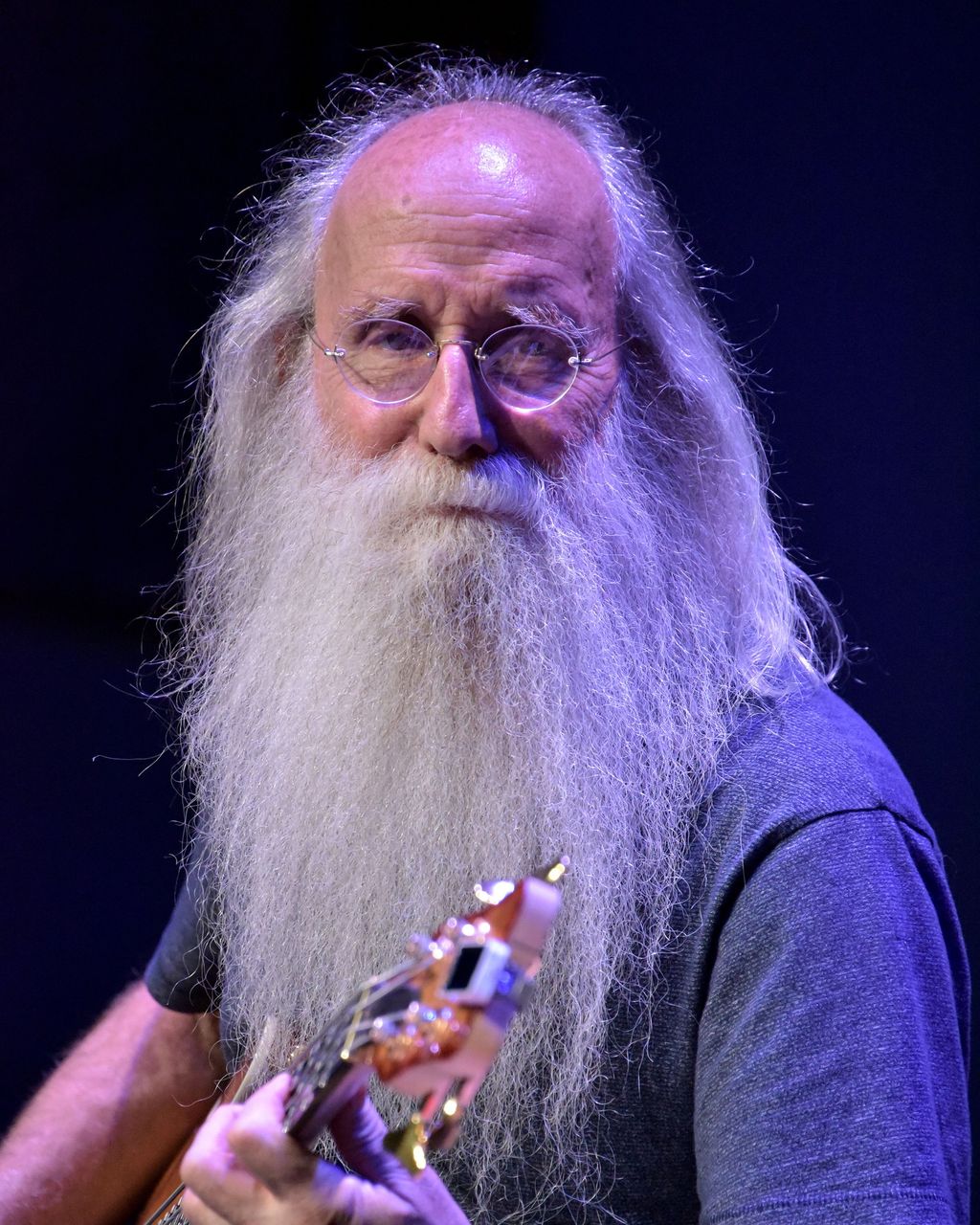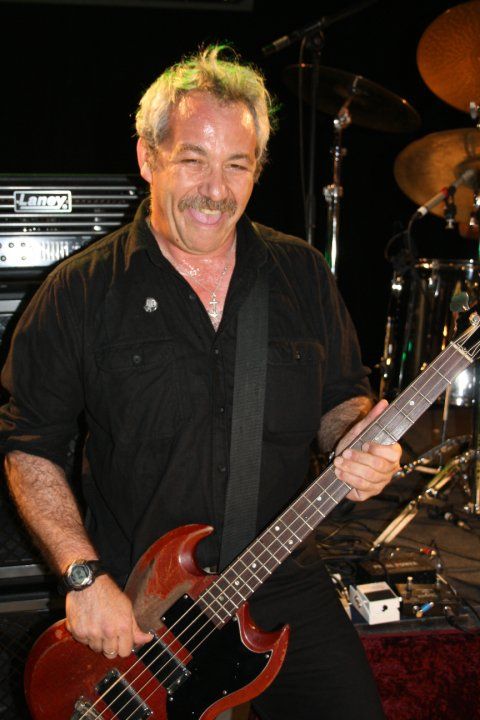
In the vibrant, ever-evolving tapestry of popular music, there are certain figures whose contributions, while sometimes less spotlighted than their guitar-slinging or vocal-commanding counterparts, are utterly indispensable. These are the architects of the low end, the rhythmic anchor and melodic counterpoint that provide the very backbone of a song. They are the bass players, often unsung heroes, whose grooves, lines, and sheer feel can define an era, elevate a band, and resonate with audiences long after the final note fades. For true aficionados, the bass is more than just an instrument; it’s the heartbeat, the gravitational pull that holds everything together.
Indeed, the impact of a truly great bass player extends far beyond mere technical proficiency. It’s about cultural resonance, the ability to sculpt a sound that becomes synonymous with a movement, a genre, or even a generation. From the raw, rebellious energy of punk to the sophisticated intricacies of jazz, the thoughtful lyricism of folk, and the propulsive force of funk, these masters of the four, five, or six-string have not just played notes, but have woven themselves into the very fabric of musical history. Their influence ripples through countless tracks, inspiring new artists and cementing their own iconic status.
So, join us as we embark on a deep dive into the extraordinary careers and distinctive styles of some of the most influential bass players to ever pick up the instrument. We’ll explore their unique approaches, their profound impact on their respective genres, and the indelible marks they’ve left on the sonic landscape. Prepare to discover, or rediscover, the compelling narratives and groundbreaking artistry that make these individuals truly great, celebrating the foundational power of the bass and the visionaries who mastered it.

1. **Thundercat**: Born Stephen Bruner, the artist known as Thundercat stands as a monumental figure in contemporary music, effortlessly bridging the gap between an array of genres and redefining the role of the bass in modern soundscapes. Hailing from a deeply musical lineage, Bruner’s journey began early, culminating in an initial breakthrough gig with the legendary thrash-punk stalwarts Suicidal Tendencies. This early exposure to raw power and intricate rhythms laid a unique foundation for his later, more eclectic explorations, showcasing a versatility that would become his hallmark. He quickly evolved beyond his punk roots, blossoming into a larger-than-life musical superhero whose influence now pervades hip-hop, jazz, R&B, and electronica.
Thundercat’s playing is characterized by a staggering proficiency that blends a profound appreciation for classic funk and fusion with an astonishingly broad palette of influences, ranging from the smooth grooves of yacht rock to the aggressive textures of nu-metal and the soulful nuances of neo-soul. This unique fusion results in a sound that is entirely his own, yet deeply rooted in a rich musical heritage. Whether it’s within the playful eccentricity of his own acclaimed solo compositions or through his countless guest appearances on pivotal records—including those by Kendrick Lamar, Janelle Monáe, Flying Lotus, Kamasi Washington, Erykah Badu, and Childish Gambino—his signature six-string sound remains instantly recognizable and utterly captivating.
The hallmark of Thundercat’s bass is its distinct sonic quality: described as “fat and buttery,” yet possessing “plenty of bite.” This rich, articulate tone allows his bass lines to simultaneously provide a deep, resonant foundation and cut through the mix with melodic clarity. His approach underscores a philosophy about the instrument that transcends its conventional boundaries. As he eloquently articulated in a 2013 interview with Interview, “You can do all kinds of things with your instrument outside of its surface purpose.” For Thundercat, his bass is not merely a tool, but an extension of his creative being, a vital “crutch” and “the best crutch” he could possibly have, enabling him to explore uncharted sonic territories and leave an indelible mark on the musical vanguard.

2. **Duff McKagan**: Before his meteoric rise to fame as the bassist for Guns N’ Roses, Duff McKagan’s relationship with the bass guitar was surprisingly nascent. Having honed his craft primarily as an ex-guitarist and ex-drummer within Seattle’s raw, burgeoning early-eighties punk scene, McKagan brought an unconventional, almost untamed energy to his newfound instrument. This unique background, coupled with his distinctly raw approach to playing, infused Guns N’ Roses’ seminal tracks, such as the snarling “It’s So Easy” and the powerhouse “You Could Be Mine,” with an undeniable, unpolished edge that became a foundational element of the band’s iconic sound. His journey into bass mastery was one of pure immersion and self-education.
McKagan’s method of learning the instrument involved an eclectic and intensive study of bass lines from a diverse array of artists. He famously “binged” on the R&B rhythms of Prince, absorbing the funk and melodic sensibility that would subtly inform his punk-rock attack. His influences also stretched to the legendary John Paul Jones of Led Zeppelin, the punk-rock simplicity and power of Paul Simonon from The Clash, and the relentless, driving force of Motörhead’s Lemmy Kilmister. Perhaps most surprisingly, McKagan also drew inspiration from Barry Adamson of the post-punk group Magazine. Adamson’s bass lines, characterized by their pronounced presence and the distinctive glassy, almost hollow sound of a chorus pedal, directly influenced McKagan’s own sonic choices.
The adoption of the chorus pedal proved to be a pivotal “secret weapon” for McKagan, allowing him to push his bass to the forefront of Guns N’ Roses’ sound on epochal albums like *Appetite for Destruction* and the *Use Your Illusion* LPs. This effect enabled his bass lines to achieve a prominent, almost melodic quality that not only held its own against Slash’s searing guitar solos and Axl Rose’s gritty, commanding vocals but also equaled their musicality and grit. McKagan’s distinctive sound became an integral component of the hard rock landscape of the eighties and nineties. Despite his profound influence and indelible legacy, McKagan remains remarkably humble, famously stating, “I don’t know where I’m rated. I don’t pay attention to that. I’m really so just all into my craft,” a testament to his dedication and pure artistic drive.

3. **Kim Deal**: In the annals of alternative rock, Kim Deal stands as an iconoclast whose distinctive approach to the bass profoundly shaped the sound of the Pixies and left an unmistakable imprint on an entire genre. Her entry into the music world was delightfully unconventional: in 1986, while working as a receptionist at a doctor’s office, she stumbled upon a *Boston Phoenix* newspaper ad seeking a “bassist into Hüsker Dü and Peter, Paul, and Mary.” Though she may have been the sole respondent, her unique combination of a sugary singing voice and formidable punk-rock bass chops proved to be the perfect, serendipitous fit for the nascent Pixies, birthing a legendary collaboration that would redefine indie rock.
Deal’s bass playing is characterized not by flashy solos or complex technical wizardry, but by its hypnotic simplicity and undeniable effectiveness. It is impossible to imagine the Pixies’ groundbreaking album *Doolittle* without her contributions. Consider the opening track, “Debaser,” where her throbbing bass part lays down an immediate, visceral foundation, pulling the listener directly into the song’s chaotic beauty. Similarly, on “Gigantic,” one of the few Pixies songs she penned herself, her “hypnotically simple line” acts as the rhythmic and melodic backbone, propelling the entire composition forward with an understated yet powerful force. Her ability to craft such impactful parts from seemingly minimal elements speaks volumes about her innate musicality and keen understanding of song structure.
Kim Deal herself attributes her effectiveness as a bassist to her deliberate “distinct lack of needless flash.” She once reflected on the deceptive simplicity of her part in the Pixies’ classic “Where Is My Mind?,” noting that many “real” bass players would struggle with such an approach. As she explained, “Some people cannot do that and will not do that, especially ‘real’ bass players. They want to help push every little moment; they want to be involved. They won’t just pedal through something.” This philosophy—prioritizing the song’s needs over individual grandstanding—allowed her to create bass lines that were not only memorable and foundational but also imbued with a unique, unpretentious elegance, solidifying her status as a truly original voice on the instrument.

4. **Leland Sklar**: The vibrant singer-songwriter movement of the 1970s, characterized by its emphasis on lyrical depth and intimate musical arrangements, presented a unique challenge for backup musicians: the need to anchor ballads and mid-tempo rockers with gravitas, all while maintaining an understated presence that never detracted from the vocalist or the song’s narrative. Few accomplished this delicate balance with the grace and precision of Leland Sklar, a session titan whose phone was constantly ringing with calls from luminaries like James Taylor, Jackson Browne, Carole King, David Crosby, and Graham Nash. Sklar and his L.A. studio cohorts understood their crucial role.
As Sklar himself articulated, “We understood that we were supporting them and accompanying them. We weren’t pushing ourselves behind them, but we still crafted an identity.” This ethos perfectly encapsulates his approach: his bass lines, though non-flashy and understated, were consistently melodic and deeply supportive, acting as the bedrock upon which countless classics were built. His inimitable sound can be heard across many of James Taylor’s most beloved songs, including the comforting warmth of “You’ve Got a Friend,” the intricate rhythm of “Handy Man,” and the infectious groove of “Your Smiling Face.” Beyond Taylor, Sklar’s bass defined tracks like Jackson Browne’s poignant “Doctor My Eyes” and the entirety of his iconic album *Running on Empty*, as well as contributing to Gene Clark’s revered cult classic *No Other*.
Sklar’s enduring versatility extended well beyond the seventies folk-rock scene. In the 1980s, his bass became an integral component of Phil Collins’ highly successful records, notably underpinning tracks like “Don’t Lose My Number.” Demonstrating an impressive stylistic breadth, he even injected a dose of funk into the Weather Girls’ legendary dance-club anthem, “It’s Raining Men,” proving his adaptability across genres. His masterful ability to serve the song, providing depth and melodicism without ego, has earned him the highest praise from his peers. David Crosby, a musician known for his discerning ear, unequivocally hailed Sklar as “the best player in the world,” a testament to the profound and enduring impact of his understated genius.

5. **Peter Hook**: Peter Hook, a bassist whose presence is as loud and distinctive as his monumental riffs, has always embodied the spirit of a rock-and-roll outlaw, often likened to Keith Richards for his unparalleled groove mastery and enigmatic mystique. Hailing from Manchester’s fertile musical landscape, Hook meticulously redefined the role of the instrument for the post-punk era of the Seventies and Eighties, first with Joy Division and then with New Order. His melodic pulse, notably in tracks like “She’s Lost Control,” became an instant classic, inspiring generations of “arty kids” to emulate his distinctive style and the almost defiant swagger of his stage presence.
Hook’s origin story is deeply intertwined with the seminal punk explosion, much like many of his Manchester contemporaries. Witnessing the Sex Pistols live served as an immediate catalyst, prompting him to form a punk band and pick up the bass. What emerged was a unique approach where his bass, surprisingly, became the lead instrument in Joy Division, driving their doom-laden classics such as the haunting “Transmission” and the brooding “No Love Lost.” He famously attributes his signature high-on-the-neck playing style, which contributed to his distinctive tone, to practical limitations: “My excuse for playing high was that I couldn’t hear the bass when I played low—our amps were that bad—but Ian [Curtis] liked it.” This accidental innovation proved to be a stroke of genius, carving out a unique sonic space for the bass.
As Joy Division evolved into the synth-driven dance-rock powerhouse New Order, Hook’s influence only broadened. With dance-floor hits like “Age of Consent,” he solidified his reputation as the era’s most imitated bassman, his innovative lines providing the propulsive energy for a new wave of music. His impact is widely recognized and lauded by his peers, with Radiohead’s Colin Greenwood noting, “Hooky played a lot of stuff up high and got great tones up there—so I’ve always been one to move up and down on the neck a lot.” Beyond his musical contributions, Hook’s larger-than-life personality has manifested in three hilarious memoirs, chronicling his fascinating career, even if his current relationship with the rest of New Order is, perhaps not unrelatedly, strained. His legacy as a pioneer of the low end, however, remains unchallenged.
As we continue our exploration into the pantheon of bass greatness, it becomes clear that the instrument’s power lies not only in its foundational role but in its capacity for profound innovation and stylistic redefinition. The journey through the history of music’s low end reveals a constant push and pull between anchoring tradition and fearlessly forging new paths. From the architects of groove to the sonic sculptors who challenged conventions, each of the bassists we celebrate leaves an indelible mark, not just on their respective genres, but on the very way we perceive rhythm and melody. These are the artists who took the bass beyond its perceived limits, embedding their unique artistry into the soul of countless recordings and inspiring new generations to embrace the instrument’s boundless possibilities. They are more than just players; they are visionaries.

6. **Esperanza Spalding**: Esperanza Spalding is a truly singular force in contemporary music, a polymath whose artistry spans genres with breathtaking fluidity and whose virtuosity on the bass is nothing short of mesmerizing. Her performances offer a mere glimpse into the vast expanse of her capabilities, effortlessly weaving between the timeless elegance of old-school standards and the audacious originality of her futuristic compositions. These originals, a vibrant tapestry of sound, draw equally from the smooth, sophisticated grooves of R&B and the intricate, often gnarly textures of progressive rock, showcasing a boundless musical curiosity and an unparalleled ability to synthesize disparate elements into a cohesive, compelling whole.
At the core of Spalding’s expansive musical universe is her bass playing, an engine of lithe electric lines and a robust acoustic foundation that drives every composition. She possesses the rare ability to command the instrument in diverse settings, whether plucking out a “super-funky cover” of a Prince song, providing a steadfast anchor for a band, or holding her own amidst the electrifying improvisations of jazz masters like Wayne Shorter, Terri Lyne Carrington, Jack DeJohnette, and Joe Lovano. Her journey to the bass was serendipitous, beginning as a violin prodigy before she stumbled upon the instrument by accident in high school, describing the discovery as akin to “waking up one day and realizing you’re in love with a co-worker.”
Since that pivotal moment, Spalding has not just mastered the bass; she has emerged as one of its most prominent and visible ambassadors in the 21st century, celebrated with four Grammy wins that underscore her profound impact and critical acclaim. Drummer and collaborator Terri Lyne Carrington offered a poignant reflection on Spalding’s unique contribution in a 2018 interview, arguing against facile comparisons to past jazz-bass virtuosos. Carrington emphasized that Spalding “didn’t get around the instrument the way fifties and sixties jazz legend] Paul Chambers does,” explaining that Spalding’s approach, which involves “not digging in as hard,” imparts “a kind of fleeting emotion that is beautiful.” This insight perfectly captures Spalding’s distinctive “feminine aesthetic” within the music, one that is not only refreshing but, as Carrington asserts, “mandatory at this point,” signaling a vital evolution in how the bass can be approached and expressed.

7. **Mike Watt**: Few musicians across any genre have so thoroughly embodied the spirit of radical theory put into vibrant, tangible musical practice quite like Mike Watt. As a co-founder of the Minutemen in San Pedro, California, during the late Seventies, alongside singer-guitarist D. Boon and drummer George Hurley, Watt became a pivotal figure in reshaping punk music from its very foundations. This trio, driven by a fiercely democratic and intellectually rigorous approach to their craft, sought to redefine the traditional hierarchies of rock, particularly in their insistence on elevating the rhythmic backbone of the band.
Watt often recounted D. Boon’s vision for the Minutemen’s sound, a vision that championed an unprecedented prominence for the bass and drums. As Watt put it, Boon “wanted the bass way up front and the drums, too,” describing it as a “redistribution of wealth.” This philosophical stance resonated deeply with Watt, galvanizing “this idea in my head that any time you get more than one guy playing together in an ensemble, you try to make a conversation, an interesting one.” This democratic maxim profoundly informed Watt’s playing, leading him to help “rethink punk music from the ground up,” crafting “short, sharp songs” that daringly incorporated elements of “funk, jazz, folk, blues, and even rap into their sound.” His formidable talent was undeniable, capable of delivering a “thunderbolt attack” as heard in the opening of 1982’s “Bob Dylan Wrote Propaganda Songs,” proving his prowess against any hard-hitting contemporary.
Watt’s relentless dedication to pushing the bass to the forefront, much like his early hero Jack Bruce of Cream, has been a consistent hallmark throughout his extensive career. This innovative approach wasn’t limited to the Minutemen; it permeated his work with Firehose, the band he formed with George Hurley, as well as Dos, a reflective duo with fellow punk bass pioneer and his onetime wife, Kira Roessler. His powerful, expressive playing also lent its distinctive weight to the reunited Stooges and continues to define his “taut groups up to the present day.” Watt’s bass lines are characterized by their “joyful, frenetic parts” which perfectly mirror the “hyper-loquacious personality” of an artist widely regarded as “one of punk’s most tireless lifelong evangelists,” a true original who consistently champions the instrument’s dynamic potential.

8. **Tony Levin**: Tony Levin is a titan of the low end, a bass luminary whose “unmistakable style” has graced an astonishing breadth of recordings, elevating the sonic landscape for everyone from the legendary John Lennon and the enigmatic David Bowie to the flamboyant pop icon Cher. This extraordinary versatility underscores his mastery, allowing him to seamlessly integrate into vastly different musical universes while always imprinting his distinctive sonic signature. However, it is arguably his groundbreaking work with the progressive rock behemoth King Crimson and the visionary art-rock maestro Peter Gabriel that has cemented his unparalleled reputation, with Gabriel himself affectionately bestowing upon Levin the fitting and resounding title, the “Emperor of the Bottom End.” This moniker perfectly encapsulates Levin’s profound command over the foundational frequencies, and his ability to craft bass lines that are both deeply supportive and intricately melodic.
Beyond his formidable prowess on traditional bass guitar, Levin has distinguished himself as the foremost evangelist and innovator of the Chapman Stick. Indeed, he has “done more than anyone to make the Chapman Stick famous,” transforming this unique, sleek, tapping-oriented instrument into a recognized and respected voice within the modern musical lexicon. His pioneering application of the Stick allows him to simultaneously lay down intricate bass grooves and articulate complex melodic figures, creating a rich, multi-layered soundscape that often blurs the lines between rhythm and lead instrumentation. This innovative approach has not only defined a significant portion of his own prolific output but has also inspired legions of musicians to explore the Stick’s immense expressive potential, fundamentally altering perceptions of what a bass player can achieve.
Levin’s contributions to King Crimson are characterized by their rhythmic complexity and textural innovation, providing the intricate, sometimes challenging, yet always compelling backbone for the band’s avant-garde explorations. In stark contrast, his work with Peter Gabriel often showcases a more lyrical and groove-oriented sensibility, with his bass lines adding immense emotional weight and propulsive energy to classics that bridge rock, world music, and pop. Whether crafting precise, powerful foundations or weaving delicate, percussive tapestries, Tony Levin’s artistry consistently transcends conventional boundaries. His deep musicality, combined with his relentless pursuit of new sonic frontiers through instruments like the Chapman Stick, firmly establishes him as one of the most influential and genuinely innovative bass players of all time, a true visionary whose impact continues to resonate profoundly across multiple genres and generations.
As we conclude our journey through the extraordinary lives and groundbreaking careers of these bass virtuosos, it’s abundantly clear that the true “greatness” of a musician is not simply measured by technical prowess, but by the depth of their influence, the uniqueness of their artistic voice, and their enduring legacy. From the pioneering figures who laid the very groundwork for modern bass playing to the contemporary innovators who continue to redefine its possibilities, each individual on this list has contributed to the rich, dynamic tapestry of popular music. They have proven that the bass, far from being just a background instrument, is the very heartbeat, the gravitational pull, and often, the secret weapon that elevates a song from good to truly unforgettable. Their stories are a testament to the profound power of the low end, a vibrant testament that will continue to resonate for generations to come, inspiring us all to listen more deeply and appreciate the profound artistry that lies beneath the surface.



